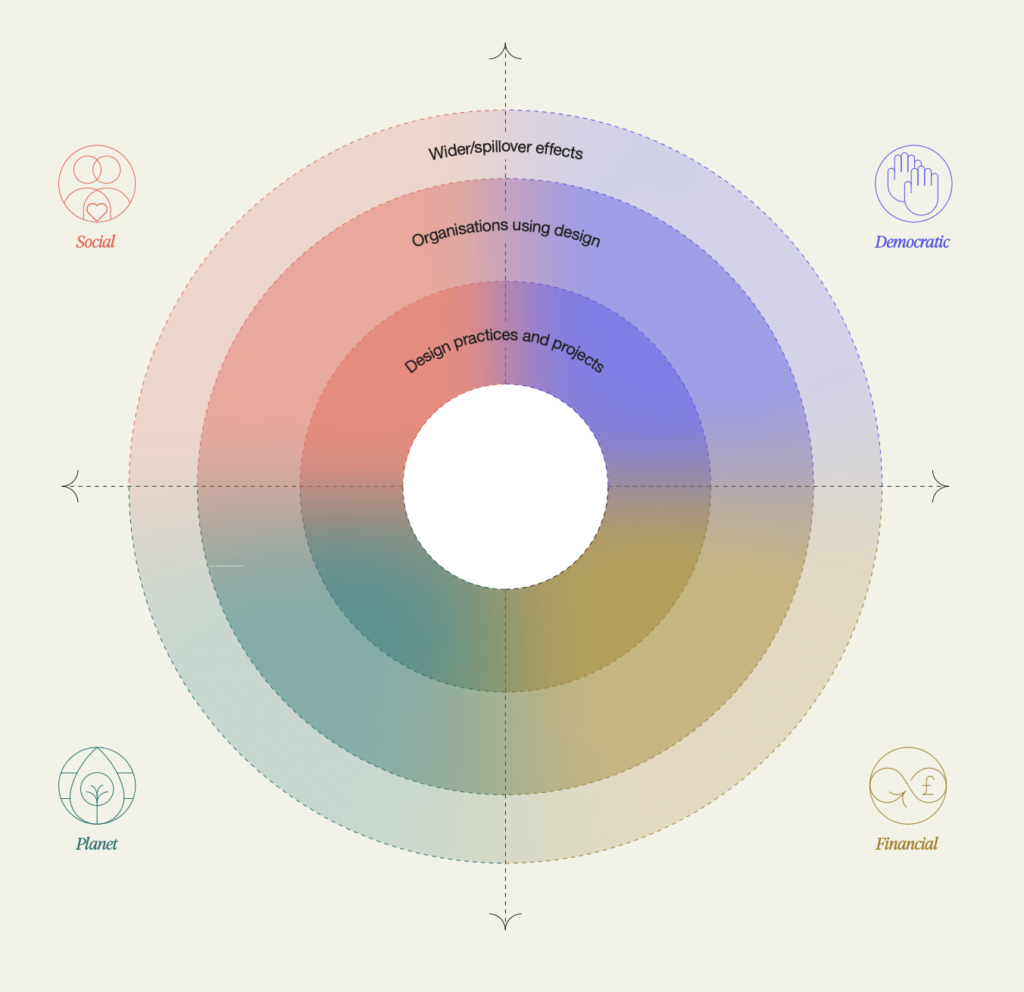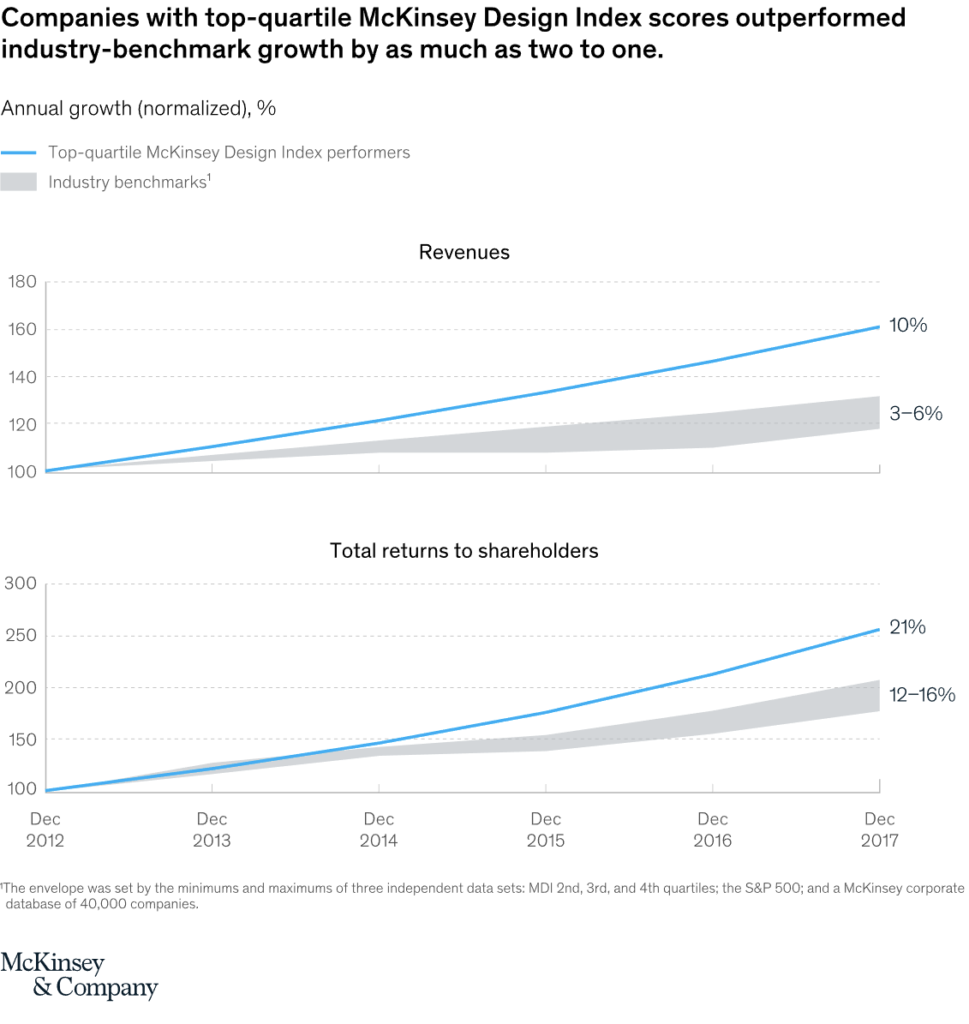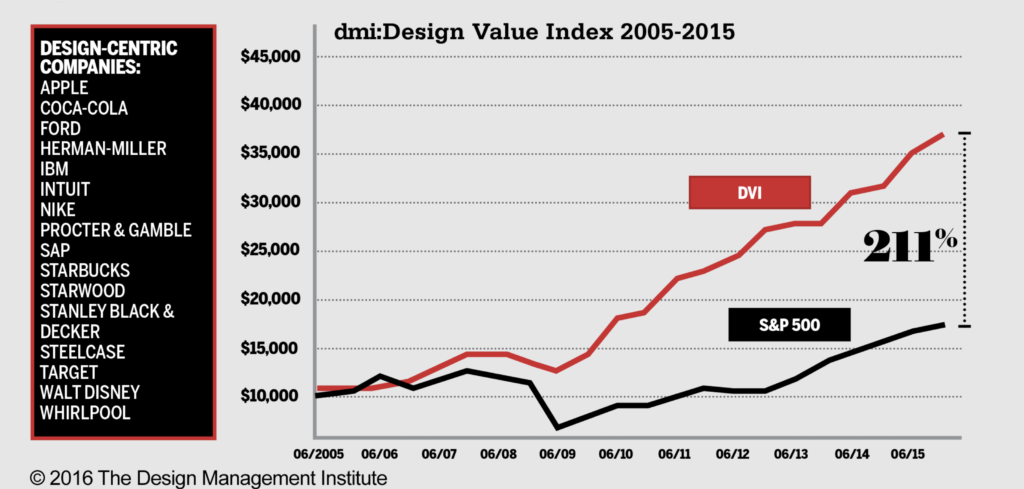I’m going to use this post to collect reports and studies on the business impact of good design.
Design council 2007
The granddaddy of design value reports, the Design Council’s Value of Design Factfinder is getting slightly long in the tooth, but is still full of great information about how good design helps businesses.
For every £100 a design alert business spends on design, turnover increases by £225.
Headline Facts from page 4:
- Every £100 a design alert business spends on design increases turnover by £225.
- In businesses where design is integral to operations, over three quarters say they’ve increased their competitiveness and
- turnover through design.
- Businesses that see design as integral don’t need to compete on price as much as others. Where design is integral, less
- than half of businesses compete mainly on price, compared to two thirds of those who don’t use design.
- Shares in design-led businesses outperform key stock market indices by 200%.
- Almost half of all UK businesses believe that, over the past decade, design has become more important in helping them
- maintain a competitive edge.
- Businesses where design is integral to operations are twice as likely to have developed new products and services. In the
- past three years, four fifths of them have, compared to a UK average of 40%.
- On average, design alert businesses increase their market share by 6.3% through using design.
- Turnover growth is more likely for businesses that increase their investment in design. Conversely, those that decreased
- investment cut their chances of growth.
- Two thirds of UK businesses believe that design is integral to future economic performance.
- Rapidly growing business are three times more likely than the rest to consider design crucial to success.
- Rapidly growing businesses are nearly six times more likely than static ones to see design as integral.
- Over two thirds of manufacturers believe it’s worth investing in design in their sector.
- Rapidly growing businesses are twice as likely as the UK average to have increased investment in design. Over two thirds
- have done so recently.
- Businesses that add value through design see a greater impact on business performance than the rest.
Not only has the Design Index out performed the FTSE 100, but that out-performance has been constant. The Index rose more in good times, and fell less in bad times. The difference hasn’t been fleeting or fluctuating, but solid over a decade.

Design Council – The Design Value Framework
We have developed a Design Value Framework to make visible and help measure these social, environmental and democratic impacts – in addition to clear financial ones.

The Framework doesn’t recommend specific measurement tools or metrics
Page 19
Without clear ways to actually measure the value(s) created by design it feels a bit fluffy, but maybe I’m missing the point?. It’s probably a nice design thinking tool for teams that value the four categories. (I’d love all teams to value the four categories, but many just don’t and/or don’t have the bandwidth. I don’t think framework will change that. )
McKinsey – The business value of design 2018
The McKinsey report The business value of design 11 years later paints a similar picture – businesses that do design better, do better. I wish they were clearer about who the included in they McKinsey Design Index and why (unless I’ve just missed it).
What our survey unambiguously shows, however, is that the companies with the best financial returns have combined design and business leadership through a bold, design-centric vision clearly embedded in the deliberations of their top teams.

DOGA – Design and Architecture Norway
companies that used design methodology were twice as innovative as those that were not active users. The companies that devoted attention to design exported twice as much as other companies and indicated that design had a positive effect on their competitiveness. These companies are clearly more user-oriented than others.
https://doga.no/en/activities/rapporter-og-caser/the-economic-value-of-design/
Frog/Cap Gemini 2019
Frog have their own Business Value of Design report too. While all its points are good, it’s more a sales brochure. Light on data an quantitive content.
They split things into 5 areas:
- Increase speed to market
- Extend market reach
- Drive engagement and loyalty
- Enhance internal capabilities
- Visionary transformation
With my service designer hat on I’d add “reducing operational risk” to these too.
DMI – The Value of Design 2015
The Design Management Institute in the US has (had?) their own Design Index.

2015 results show that over the last 10 years design-led companies have maintained significant stock market advantage, outperforming the S&P by an extraordinary 211%.
The DMI do get points for explaining quite well what goes into their index.
Baymard – abandoned shopping carts 2022
Baymard look at the reasons people leave ecommerce sites with items in their basked. They calculate that 260 billion dollars worth of sales are missed due to usability problems. Even if that’s out by a bit, it’s big numbers that can make a real difference to companies.